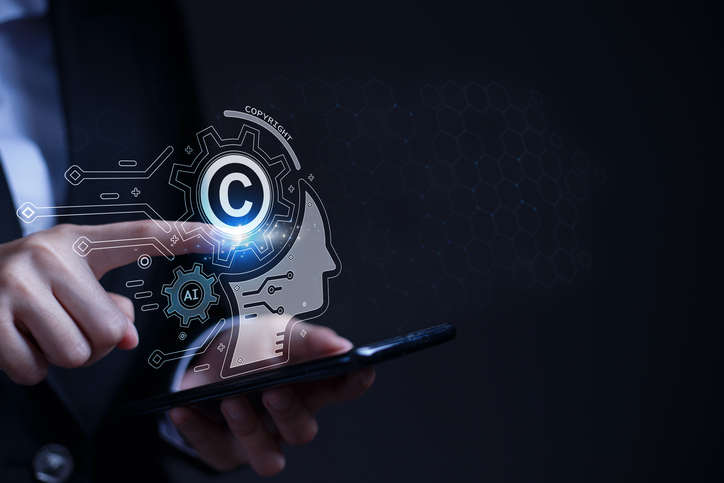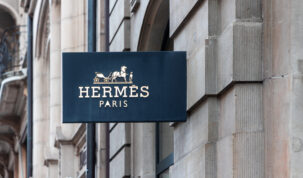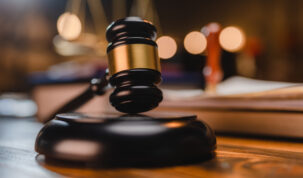In November 2023, the Beijing Internet Court issued a first-instance judgment in China’s first “AI-generated picture copyright infringement case”, clarifying that the AI-generated picture involved in the case has the quality of “originality”, reflecting the original intellectual input of human beings, and thus should be recognised as a work and protected by copyright law. The judgment has taken effect, serving as a critical reference for similar cases. On February 27, 2025, this case was announced as one of the top 10 nominated cases of 2024 to promote the rule of law in the new era by the Supreme People’s Court of the People’s Republic of China. As disputes over AI-generated content increase, according to the work report of the Standing Committee of the National People’s Congress, China will strengthen legislative research on emerging fields such as artificial intelligence in 2025.
Case Summary
The plaintiff used an artificial intelligence model to generate a picture by inputting prompt words and then posting it online. The defendant published an article on another online platform and used the picture as an illustration in the article. The plaintiff claimed that the defendant’s unauthorised use of his picture by removing his signature watermark caused the relevant users to misidentify the defendant as the author of the picture and also seriously infringed his right of authorship and the right of information network transmission, and thus demanded a public apology and compensation for damages. Case reference (2023) Jing 0491 Min Chu No. 11279.
Key Issues
- Does the AI-generated picture, in this case, constitute a work, and what kind does it constitute?
- Does the plaintiff own the copyright of the work involved in this case?
- Whether the alleged behaviour constitutes an infringement, and whether the defendant should bear legal responsibility.
Court Rulings
The court held that:
- Does the AI-generated picture, in this case, constitute a work, and what kind does it constitute?
In this case per se, the picture shows identifiable differences from the prior works. In generating the picture, the plaintiff designed the characters, the presentation methods, and other screen elements using prompt words. Then, the layout and composition of the picture were set through parameters which reflected the plaintiff’s choice and arrangement. As the picture in this case reflected the plaintiff’s intellectual input, it meets the requirement of “intellectual achievement”.
On the other hand, after the plaintiff obtained the first picture by inputting prompt words and setting relevant parameters, he continued adding prompt words, modifying parameters, and constantly adjusting and revising, ultimately receiving the picture involved in the case. This adjustment and revision process reflected the plaintiff’s aesthetic choice and personality judgment. The picture involved in the case is not a “mechanical intellectual achievement”. In the absence of contrary evidence, it can be determined that the picture involved in the case was completed independently by the plaintiff, reflecting the plaintiff’s personalised expression. Therefore, the picture in the case meets the requirement of “originality”.
When people use AI models to generate pictures, they use tools to create. That is people, not AI models, make intellectual inputs in the entire creative process. Encouraging creation is recognised as the core purpose of the copyright system. As long as AI-generated pictures can reflect the original intellectual input of human beings, they should be recognised as works and protected by copyright law.
In this case, the picture is a graphic work composed of lines and colours with aesthetic significance; thus, it is a work of art protected by copyright law.
- Does the plaintiff own the copyright of the work involved in this case?
The plaintiff directly set the AI model according to his needs and ultimately selected the picture involved in the case. The picture was produced based on the plaintiff’s intellectual input and reflected the plaintiff’s personalised expression. Therefore, the plaintiff is the author of the picture and enjoys the copyright thereof.
- Whether the alleged behaviour constitutes an infringement, and whether the defendant should bear legal responsibility.
In this case, the defendant used the picture involved in the case as an illustration without permission and posted it on her own account, allowing the public to obtain the picture at any time and any place of their choice. This infringed the plaintiff’s right to information network transmission for the picture. The defendant’s removal of the signature watermark also infringed the plaintiff’s right of authorship. Hence, the defendant has infringed the plaintiff’s rights and should bear the tort liability.
Ultimately, the court ruled that the defendant should apologise and compensate for the losses. Neither party appealed the above judgment.
Highlights
This is the first time to confirm that the content generated by artificial intelligence has the attribute of work from the judicial perspective. This judgment addressed the following criteria for determining whether AI creations constitute works:
- Only intellectual achievements with the quality of “originality” can constitute works and AI-generated content should be recognised as works and protected by copyright law as long as they reflect human beings’ original intellectual input and
- Under Chinese copyright law, the author is limited to natural persons, legal persons, or unincorporated organizations. The AI model itself cannot be the author.
Implications
This case has made functional explorations into the legal protection of AI-generated content. To a considerable extent, it has inspired and even promoted more in-depth discussions and research on this issue among all sectors. The judgment in this case upholds the view that copyright law only protects “creations of natural persons”. By recognising the “work” attributes of AI-generated pictures and the “creator” status of users, it encourages users to use AI tools to create works, thereby achieving the inherent goal of copyright law to “encourage the creation of works” and strengthening the dominant position of human beings in the development of artificial intelligence.
Practical Tips for Copyright Protection in China
While registration is not a prerequisite of copyright, and work is automatically protected by law from the completion date of the creation, in the event of a dispute, it may not be easy to adduce evidence to prove the ownership of the copyright in practice. Since a copyright registration certificate obtained in China could serve as prima facie evidence of copyright ownership in legal actions, it is advisable to register copyright in China. For the logos/brands that are original, creative and artistic, registering copyright for them in China would also serve as an auxiliary means of trademark protection because, in contrast to trademark registration, copyright protection is not limited to similar goods and services (claimed in the trademark application). A prior copyright registration certificate obtained in China could serve as the prima facie evidence on the copyright ownership of the logos/brands in future legal actions, inter alia, to oppose/invalidate any subsequent trademark application in which the figurative elements are substantially similar to the logos/brands in relation to goods and services different from those used/provided/registered by the owner of the logos/brands.






